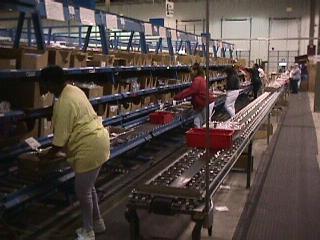
Figure 1: In this flow rack, pick-to-light system, picking errors dropped 35% under bucket brigades.
A beautiful implementation of bucket brigades was done at a subsidiary of Readers Digest. They have requested anonymity, which is too bad because they did such a beautiful job it deserves to be widely admired.
In brief, this non-union operation does most all of its business in September through November, so they have a big problem integrating temporary workers into their work force.

Figure 1: In this flow rack, pick-to-light system, picking errors dropped 35% under bucket brigades.
There are twelve aisles of flow rack, with 4 to 5 pickers in each aisle. Figure 1 shows an aisle at work. There are four pickers in this aisle and orders are assembled from the viewer's right to left. The fastest picker is the lady in yellow, who completes orders and then puts them on the conveyor behind her, which goes to inspection and packing (upper right).
This site previously picked by zone, under the control of a commercial pick-to-light system and it was quite efficient. The only "cost" to convert to bucket brigades was to turn off a feature of the pick-to-light system that was not necessary under bucket brigades and which confused the workers. Bucket brigades realized an 8% increase in throughput over the season; but this figure is probably low because it measures throughput of the entire work force, including restockers, inspectors, and packers, of whom there were more than pickers.
At this site the greatest benefit realized by bucket brigades was a 35% reduction in picking errors. Under zone-picking the conveyor become quite congested and so workers would occasionally put picks in the wrong tote. Bucket brigades use minimal work-in-process and so eliminated the congestion of totes on the conveyor.
At the end-of-the-season 1998, this site had cumulative pick accuracy of 99.98% under bucket brigades.
Notice that these improvements in throughput and in accuracy were achieved without tracking the performance of individual team members. Instead, all measurements were made on team performance.
The warehouse manager said that another benefit was that bucket brigades made the work flow more smoothly. This made it easier on the downstream packers as well as on the pickers themselves. When allowed to vote on keeping bucket brigades or returning to zone-picking the workers voted unanimously to keep bucket brigades.
Incidentally, this site ran an incentive scheme (which we recommend, to help reinforce the team ethos): If each member of the team had perfect attendance over a week, then everyone received an extra $1/hour for the week just elapsed. If, in addition, work goals were met, everyone received yet another extra $1/hour.